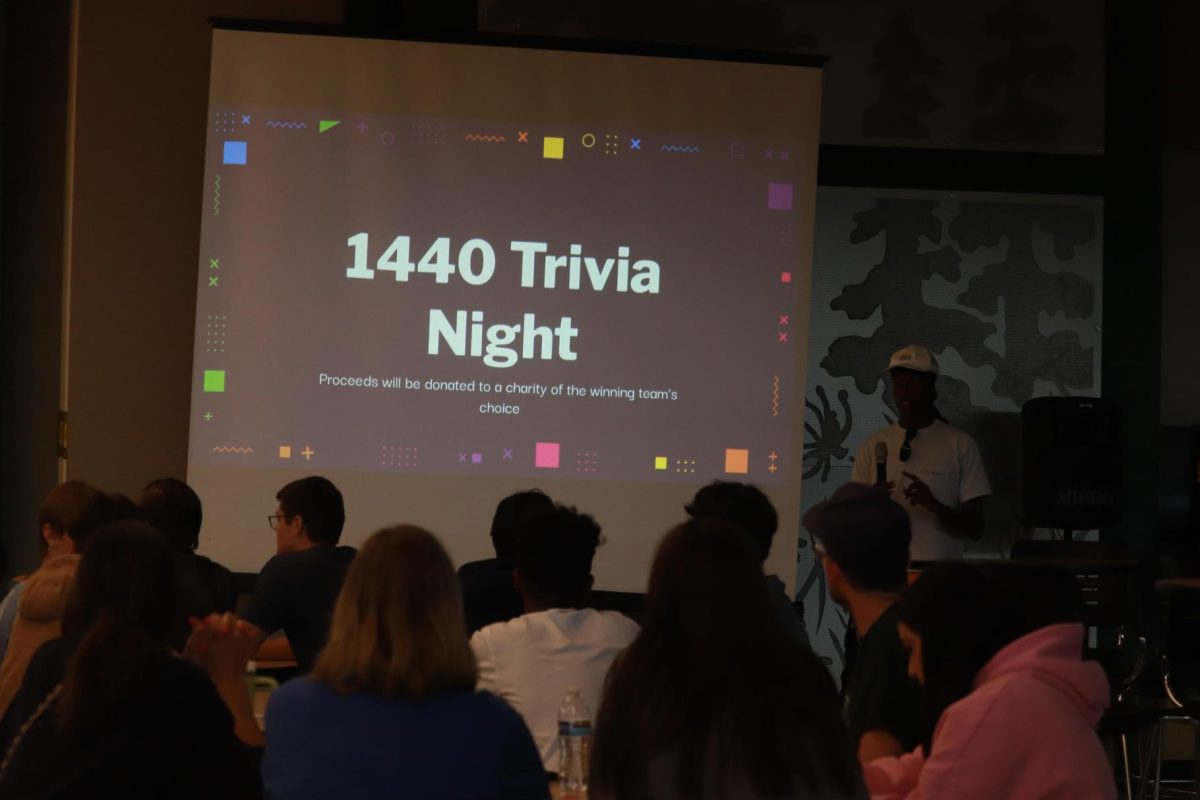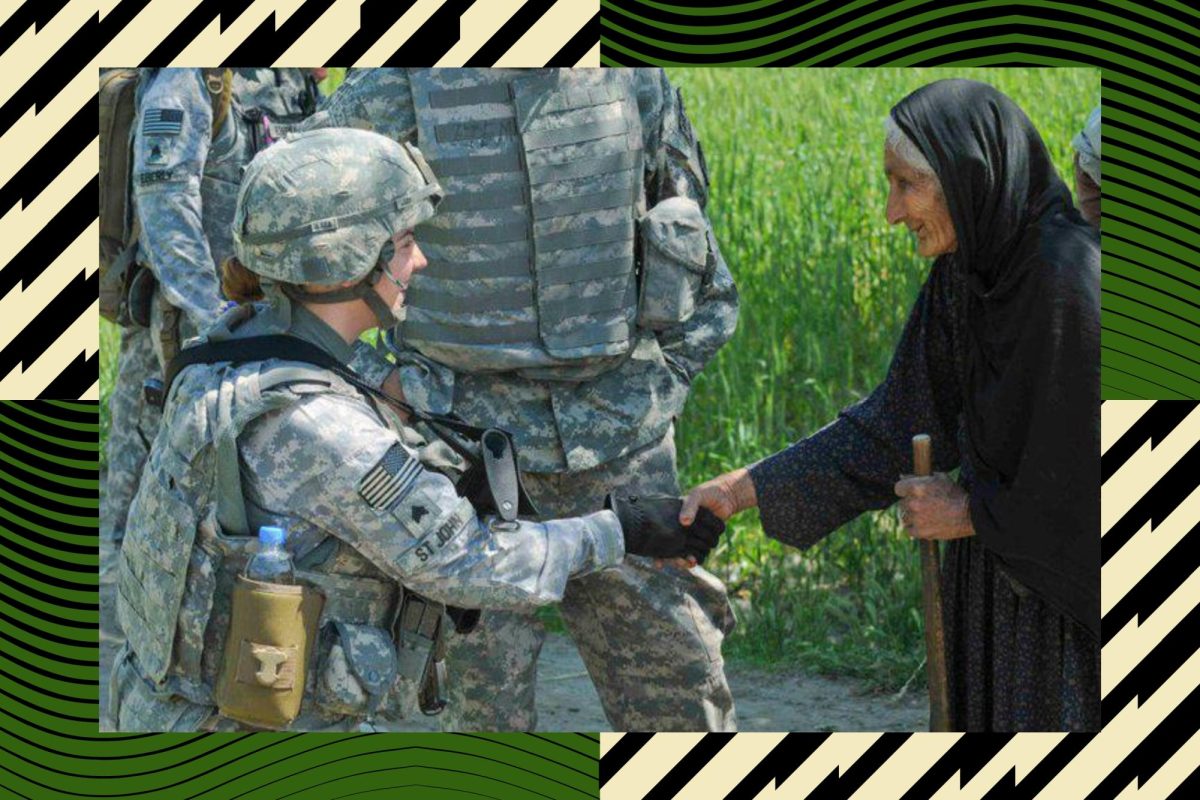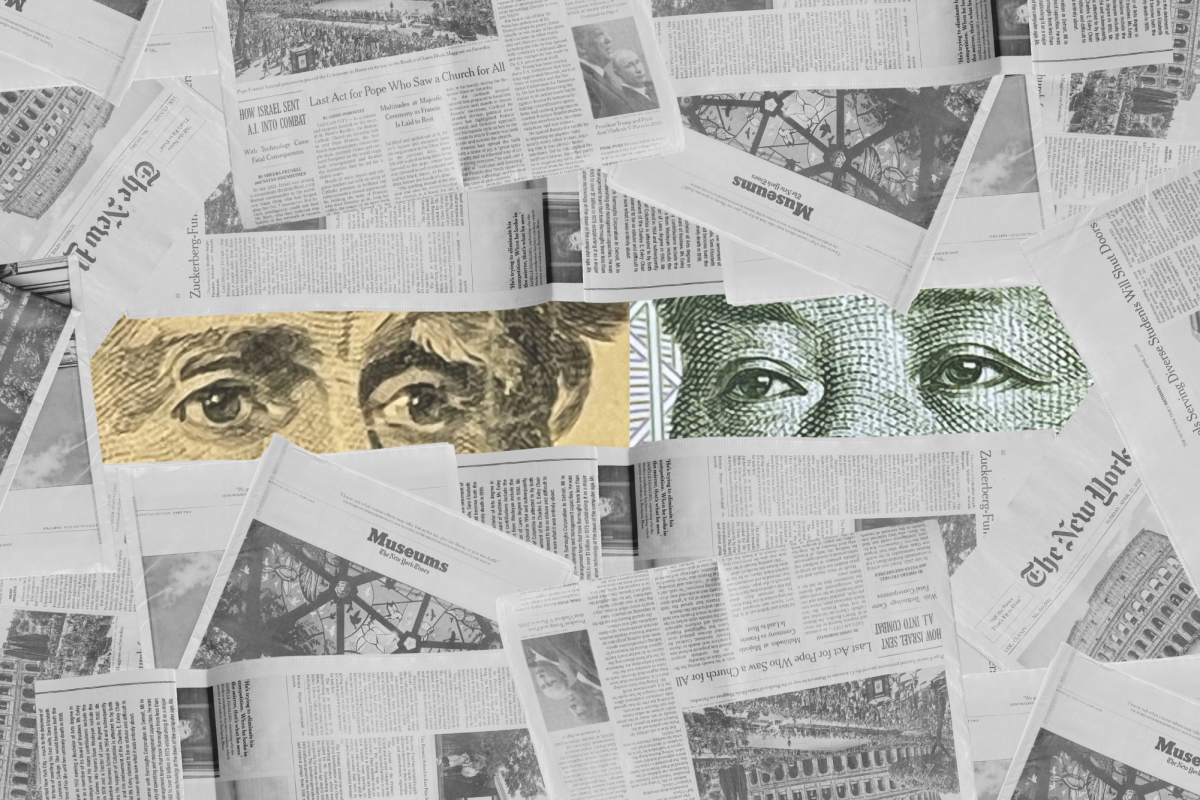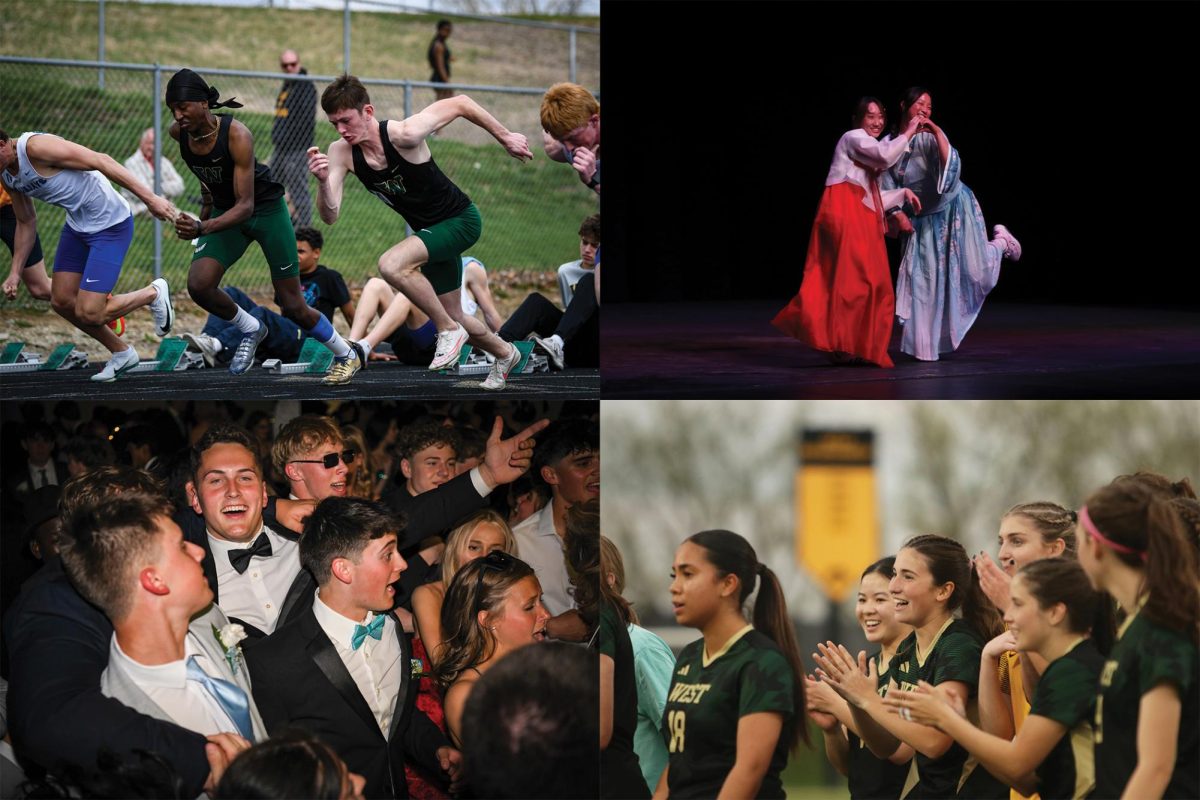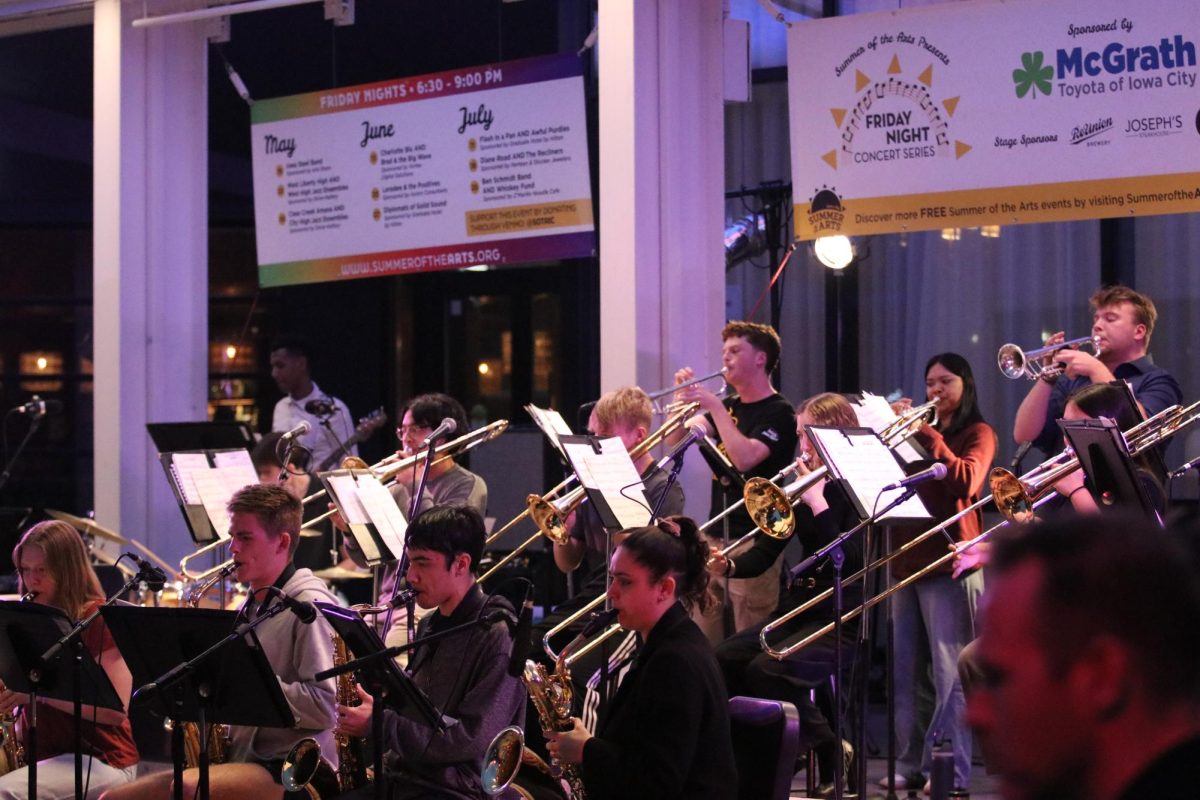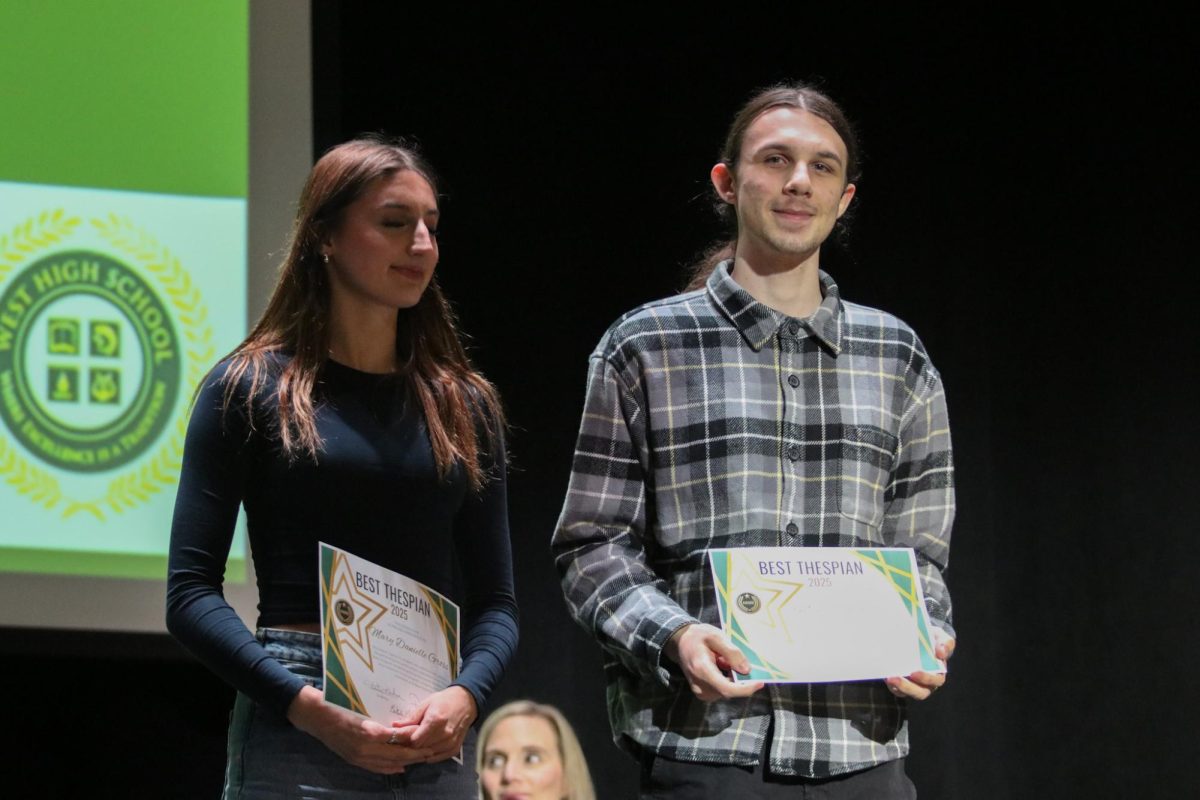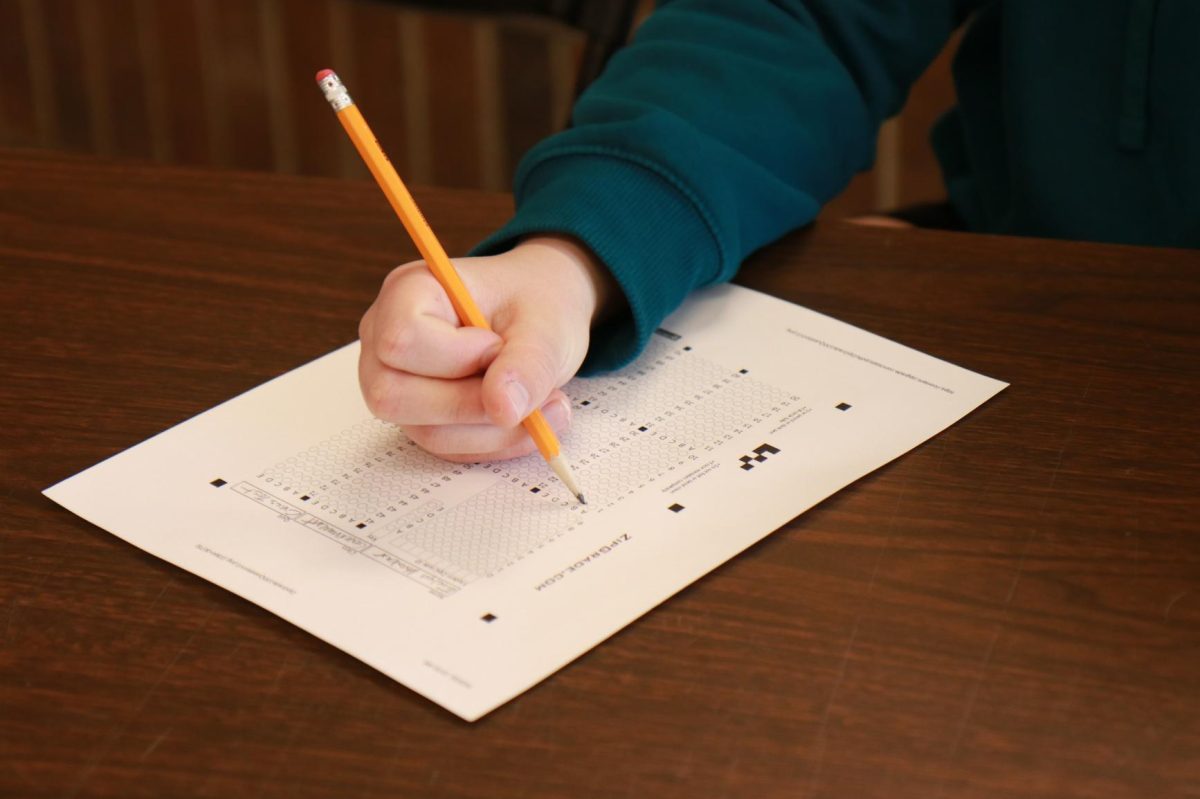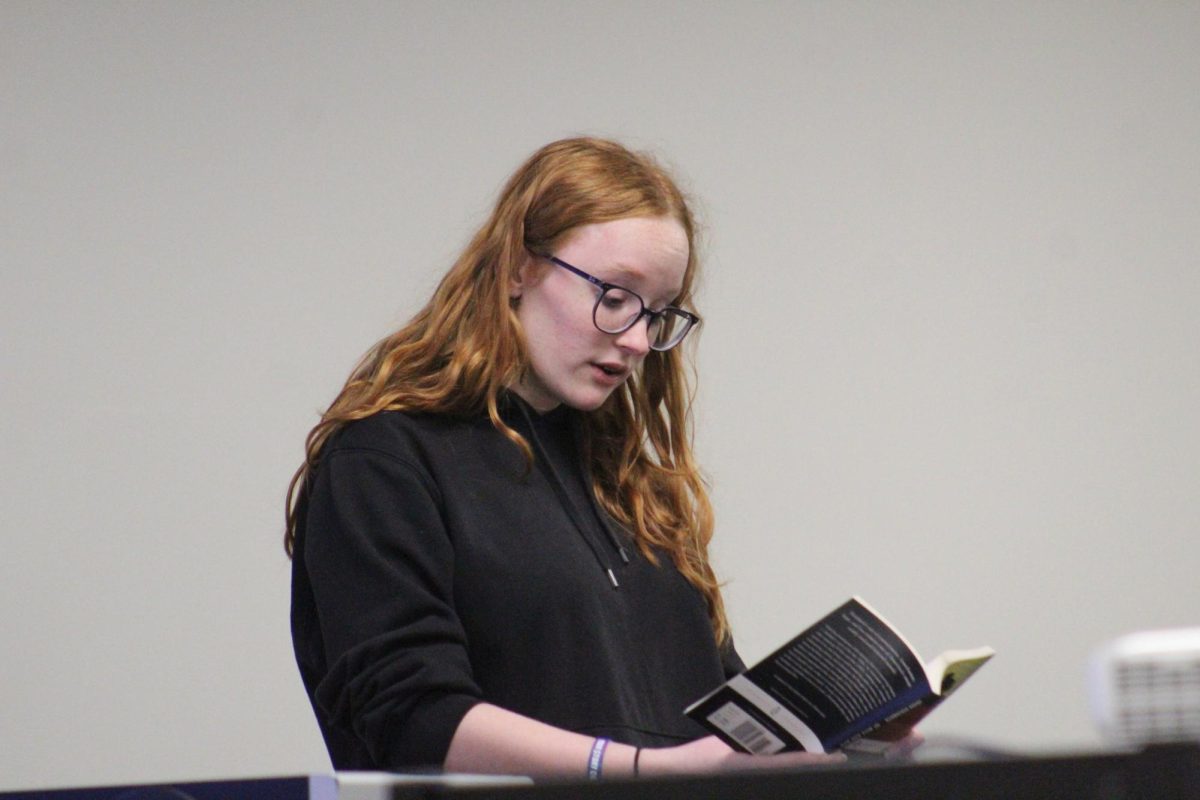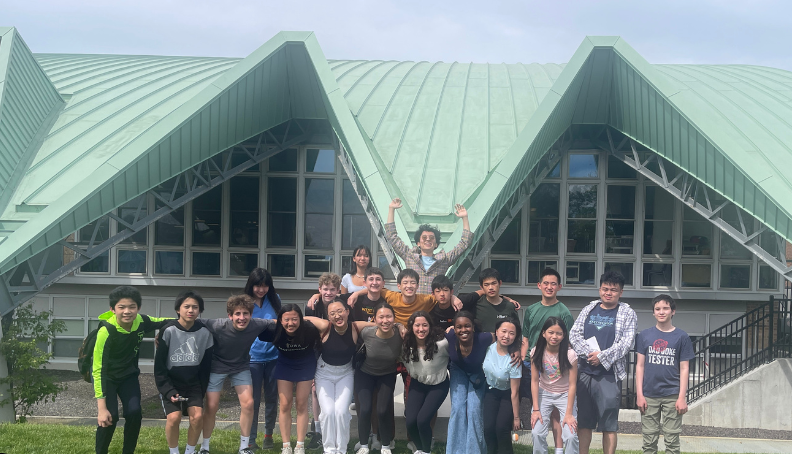



Comic journalism may sound…well, comical, but hearing renowned artist and journalist Joe Sacco speak about his work Friday, Oct. 7 at 7:30 p.m. at the University of Iowa Library was anything but. Sacco not only provided new insight on the medium of comics to tell a story, he provided new insight on the Israeli-Palestinian conflict, which he has covered in his last two books: Palestine and (his latest) Footnotes on Gaza.
Beginning his lecture with a Pulitzer Prize winning photograph on the Vietnam war, Sacco explains that images taken by photojournalists are confined to exactly what fits in the frame – producing images that can “run away” from the photographers, presenting viewers with facts that don’t necessarily lead them to a true conclusion. Sacco elaborated that using comics allows him to create a sort of collage of observed images to present more complete insight into the true feel of a scene.
“I don’t want my interpretation to be made up. I want it to be an informed interpretation. … Drawing is a deliberate act and a subjective act and there’s ultimately a tension between the accurate quote and the image,” he said.
Sacco’s comics aren’t about escaping reality with superheroes and special powers, but about truly exploring it. Many of Sacco images are drawn from his own observations in Palestine, while others are recreations of past scenes based on intensive research and many eyewitness accounts. All of the quotes in Sacco uses he gathered and recorded himself with the help of an interpreter – a process similar to that of conventional journalists.
But unlike print or radio journalists with almost immediate deadlines, Sacco’s stories take five or more years for completion. He maintains accuracy by keeping meticulous accounts of his experiences in a journal.
“After about two years I lose that taste in my mouth. … For a while I can almost feel the sensation of being there,” he said.
Although Sacco admits that memory erodes and details are lost in the time lapse, he said that the fact that his projects take years is a recognition of the importance of the subject matter.
“You surrender to the significance of the event and the mass of thousands that can’t be ignored [when it takes years to complete an accout],” he said.
Sacco remembers being presented only with images of the Palestinians as terrorists growing up. And because the whole story of the Palestinian people was going largely untold, he had no qualms about producing a one-sided account of the Palestinian view of the conflict.
He remembers staying in Rafah, a town on the border of Egypt and Palestine, where there are tunnels beneath the fencing to smuggle weapons and goods to Palestinians. The Israelis demolition any Palestinian home with evidence of weaponry and drill into the ground to collapse nearby tunnels. He was there when many such homes were pulverized, and recalls watching a man yell at a photojournalist to put down the camera pointed at Palestinian rebels outside the man’s home, Israelis and their giant machines patrolling nearby and an activist group unfurling a banner that read “Stop the demolitions.” A chaos he later created through a comic rendering in his book.
Sacco said he strives to be honest in his reporting, although he is not sure it’s possible to be objective. And while he was affected by his experiences in the field, they weighed on him even more heavily during later reflection and the actual construction of his images and stories.
“When you’re a journalist you’re kind of like a technician or a clinician. You become very cold and focused on getting a story,” he said, explaining that like a doctor removing a tumor, he performed his tasks carefully and exactly then moved immediately to the next patient. But “when you’re drawing you have to inhabit the moment.”
Among the most challenging characters to portray, Sacco said, were the Israeli soldiers.
“I understood fear and I could draw fear, but when you don’t understand psychologically what people [like the Israeli soldiers] are feeling, it’s really hard to draw their faces,” he said.
According to Sacco, this is one of the many questions that no medium of journalism can answer, and has sparked his newly developed interest in psychology.
But despite its limitations, his image-based story telling transcends a major boundary: language.
“[When I was interviewing Palestinians] they opened [my book Palestine] up and they were in a refugee camp and they could see themselves. They could have opened a prose book and if it was written in English it would have meant nothing to them. But they could understand the comics and they got what I was doing,” he said.


